- Nature / Scenery
- Gourmet
- Experiences
- Hot Springs
No.f_0033
Feast on Crab and Scenery: An Adventure by Train Through a Land of Rich Traditions
In the San’in region, red snow crab season opens in autumn, followed by Matsuba snow crab in winter—prime time for crab-focused trips. One of the hub towns is Hamasaka in Hyogo Prefecture, the only place in Japan where “crab sommeliers” host your meal, offering a singular dining experience found nowhere else. Using the hot-spring town of Hamasaka as a base, set off on a grand rail journey toward the Tottori Sand Dunes, taking in the dynamic vistas of the San’in Kaigan UNESCO Global Geopark along the way.
In Hamasaka, the Town of Crab Sommeliers, Savor the Delicacy at Its Finest
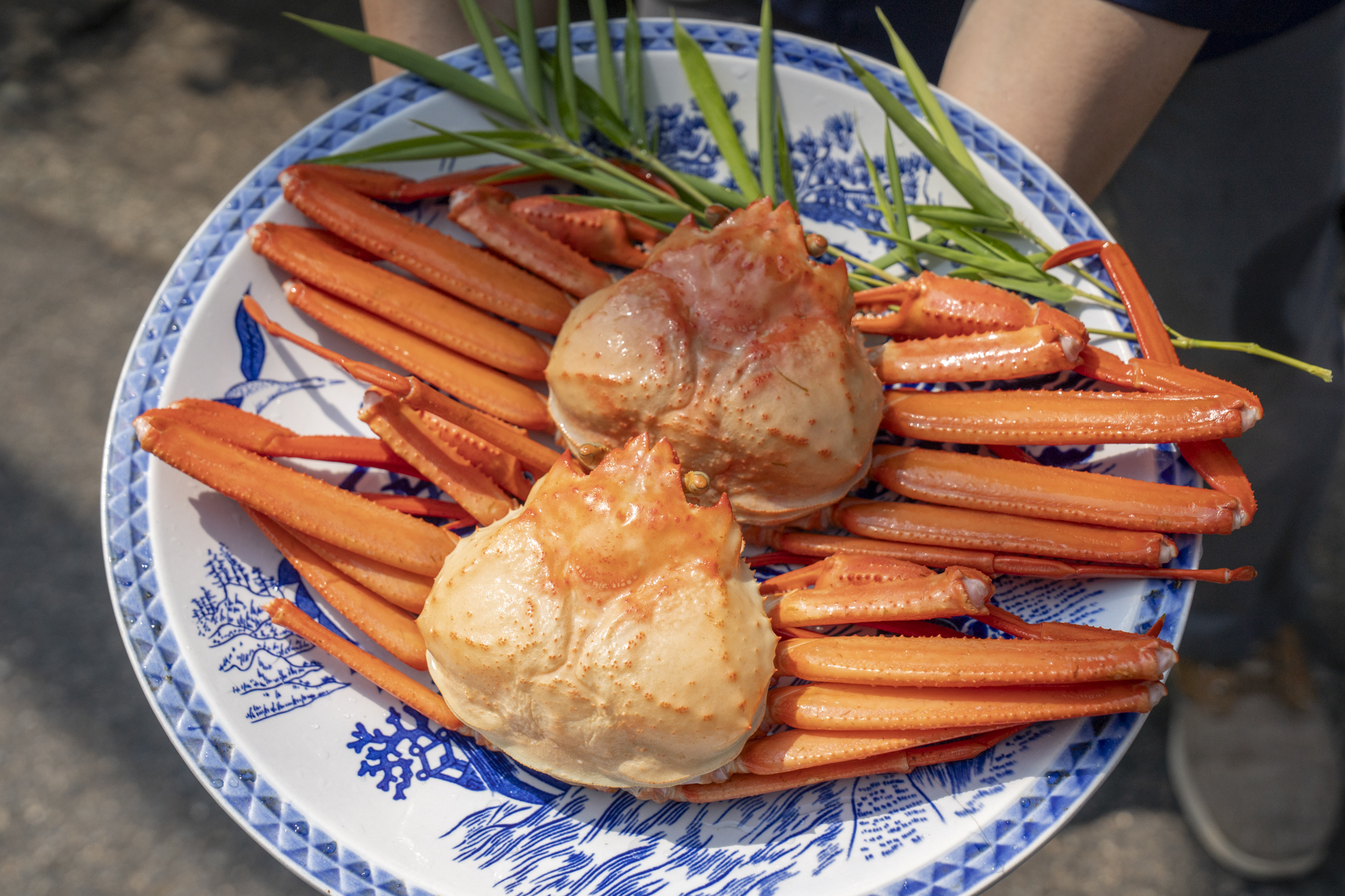 Red snow crab season opens on September 1 and can be enjoyed until around June.
Red snow crab season opens on September 1 and can be enjoyed until around June.
Hamasaka, set along the northern coast of Hyogo Prefecture, is a crab capital of the San’in region and easy to reach—about 2.5 to 3 hours by limited express from Himeji or Kobe, or roughly 30 minutes by car from Tottori Airport. Its therapeutic hot springs add to the appeal, and the town makes an ideal base for exploring the San’in Kaigan UNESCO Global Geopark.
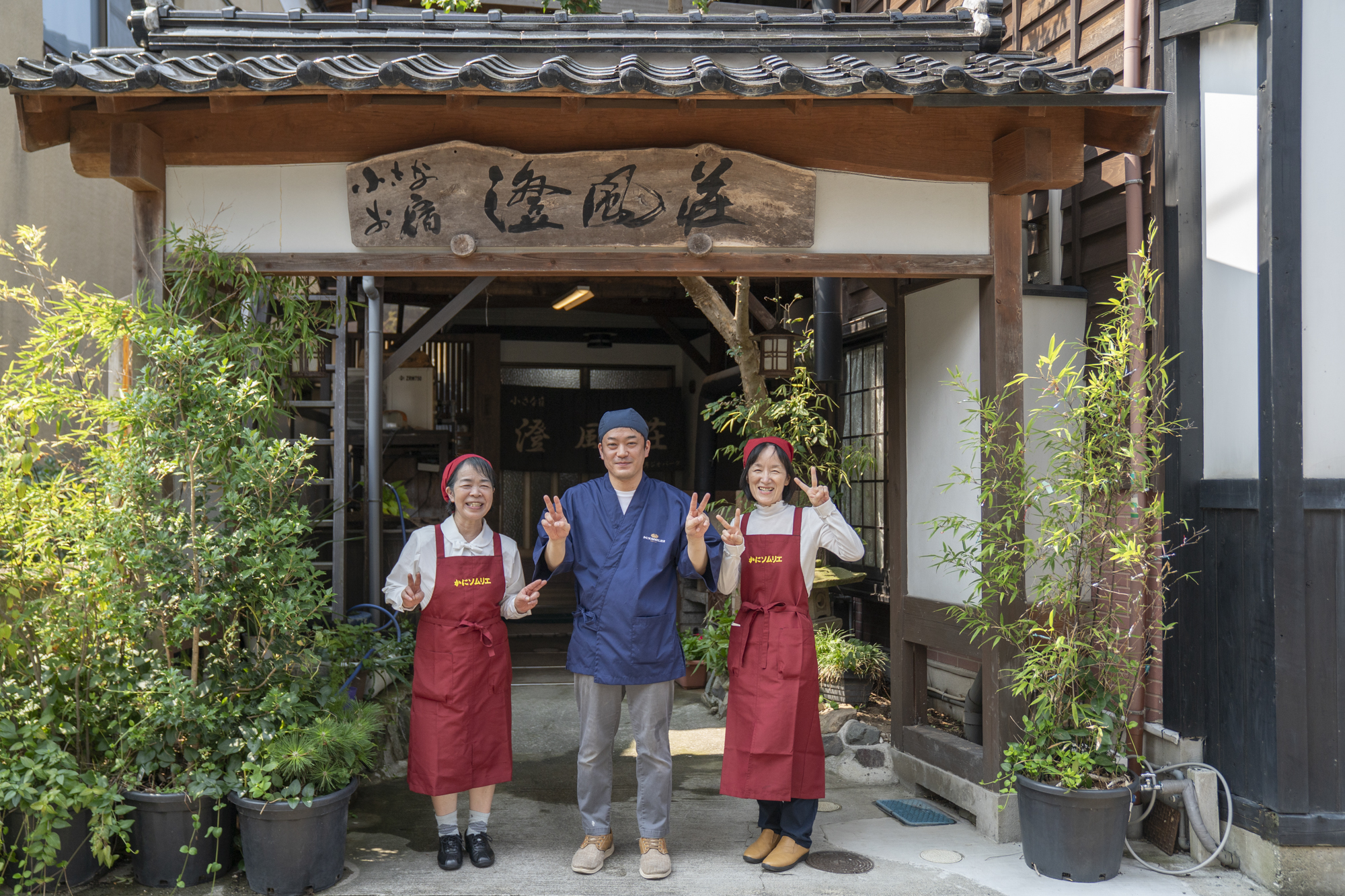 A welcome from the crab sommeliers of Syofuso with a “crab peace” pose.
A welcome from the crab sommeliers of Syofuso with a “crab peace” pose.
Hamasaka is the only town in Japan that trains “crab sommeliers.” To qualify, candidates complete around 30 training sessions over three years and must pass rigorous exams. Since the first 37 sommeliers were certified in 2007, about 50 now work in local inns and restaurants. A leading example is Syofuso, a traditional ryokan inn staffed by five crab sommeliers and led by the proprietress, ready to deliver a superlative crab experience.
 A hearth room steeped in Japanese ambiance, where crab and seafood are charcoal-grilled.
A hearth room steeped in Japanese ambiance, where crab and seafood are charcoal-grilled.
Syofuso is an intimate ryokan inn with just six rooms. In its all-private dining rooms, guests gather around an irori hearth or shichirin grill to savor crab and other seafood.
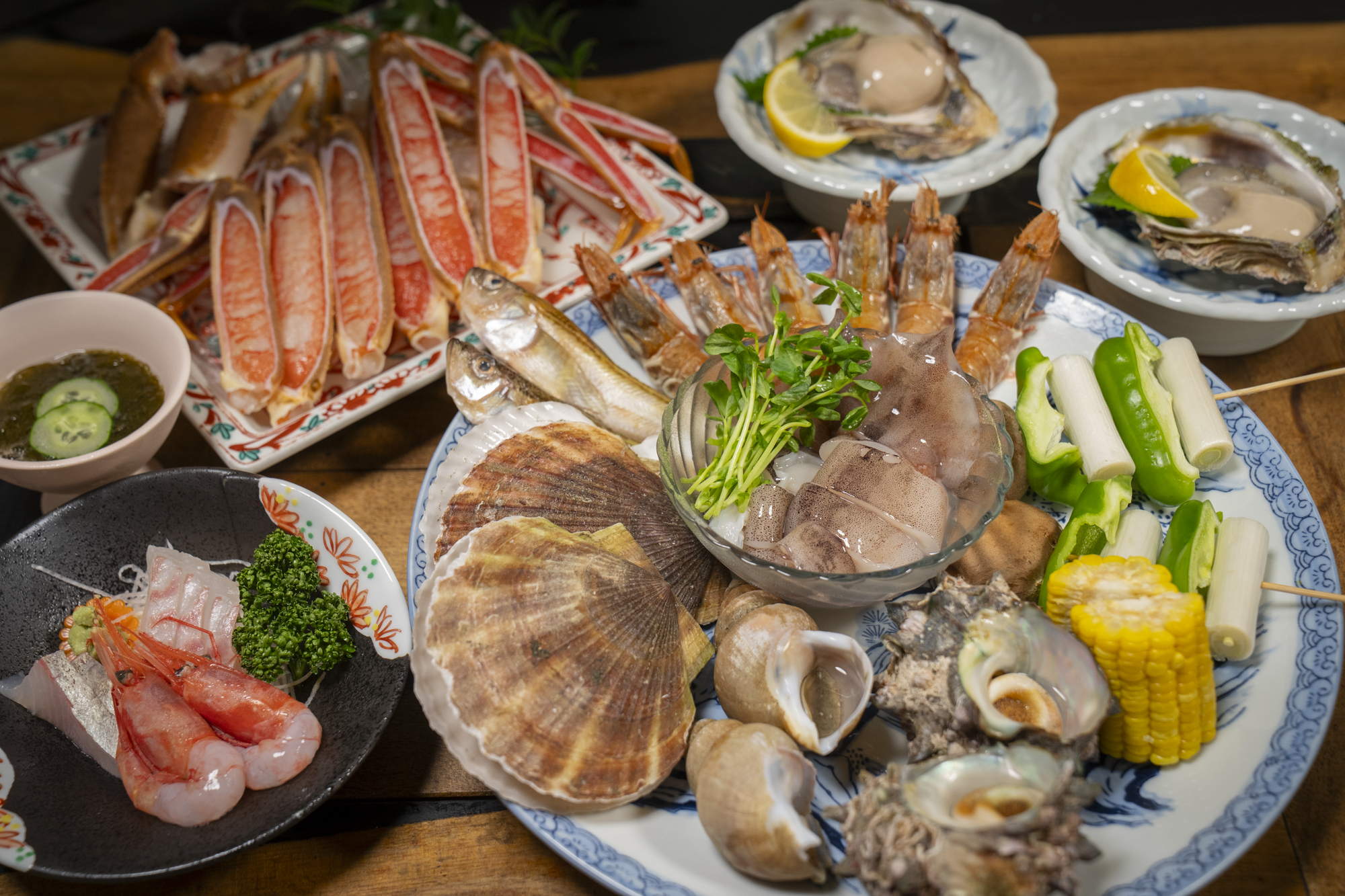 Snow Crab & Pirate Grill Plan, from 21,800 yen per person for one night with two meals (based on two guests per room).
Snow Crab & Pirate Grill Plan, from 21,800 yen per person for one night with two meals (based on two guests per room).
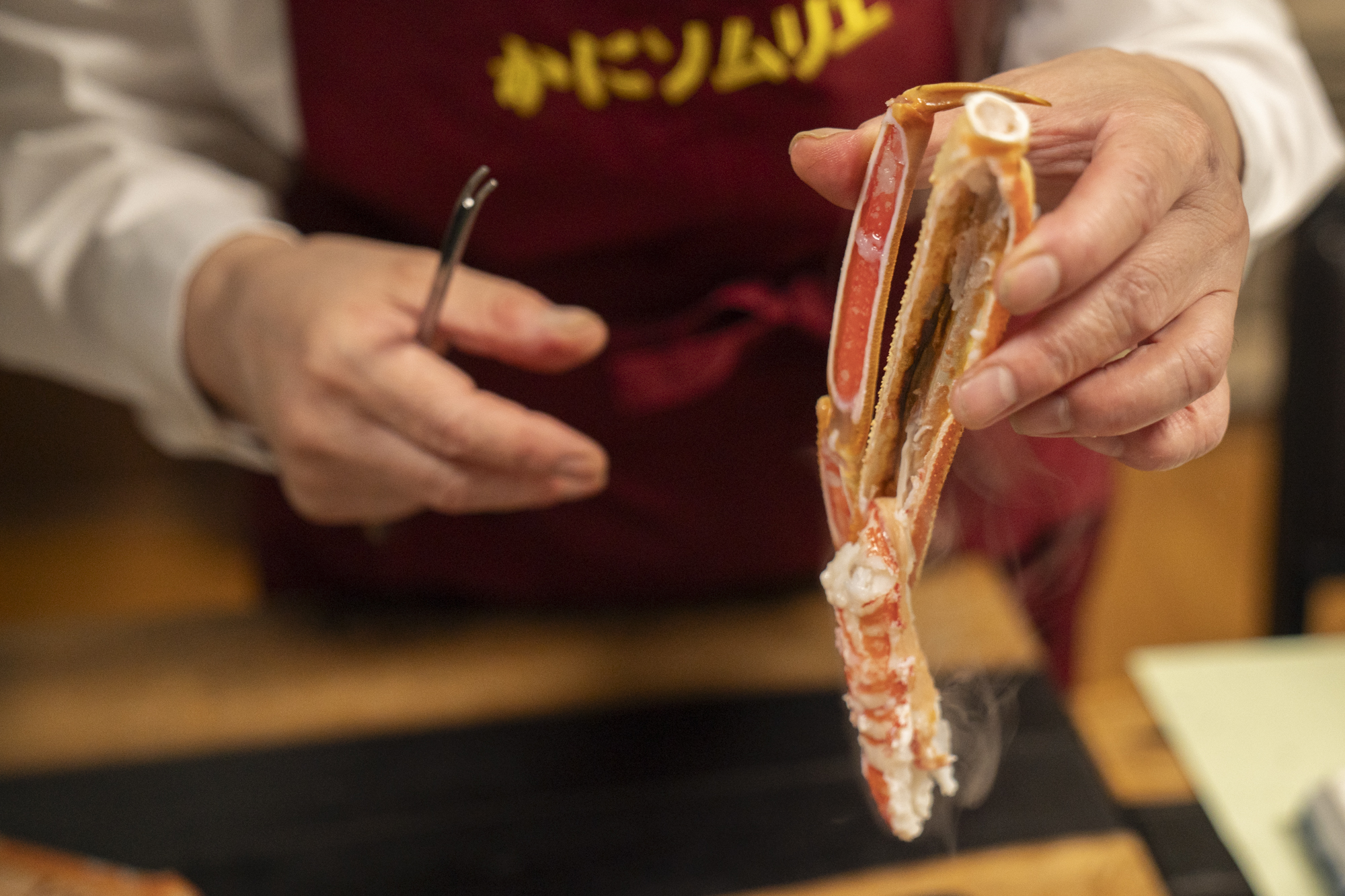 Crab sommeliers judge peak doneness and deftly demonstrate how to shell each piece.
Crab sommeliers judge peak doneness and deftly demonstrate how to shell each piece.
At ryokan with crab sommeliers, live crab is taken from the tank and prepared to coincide precisely with your mealtime, so you enjoy it at peak freshness—an advantage only the source can offer. For grilled or boiled crab, where timing is delicate, a professional will cue the perfect moment to eat. Even seasoned crab lovers are astonished—“I’ve never had crab this good”—at the incomparable flavor and texture. The sommeliers’ polished performance adds to the sense of occasion, turning dinner into a truly moving experience.
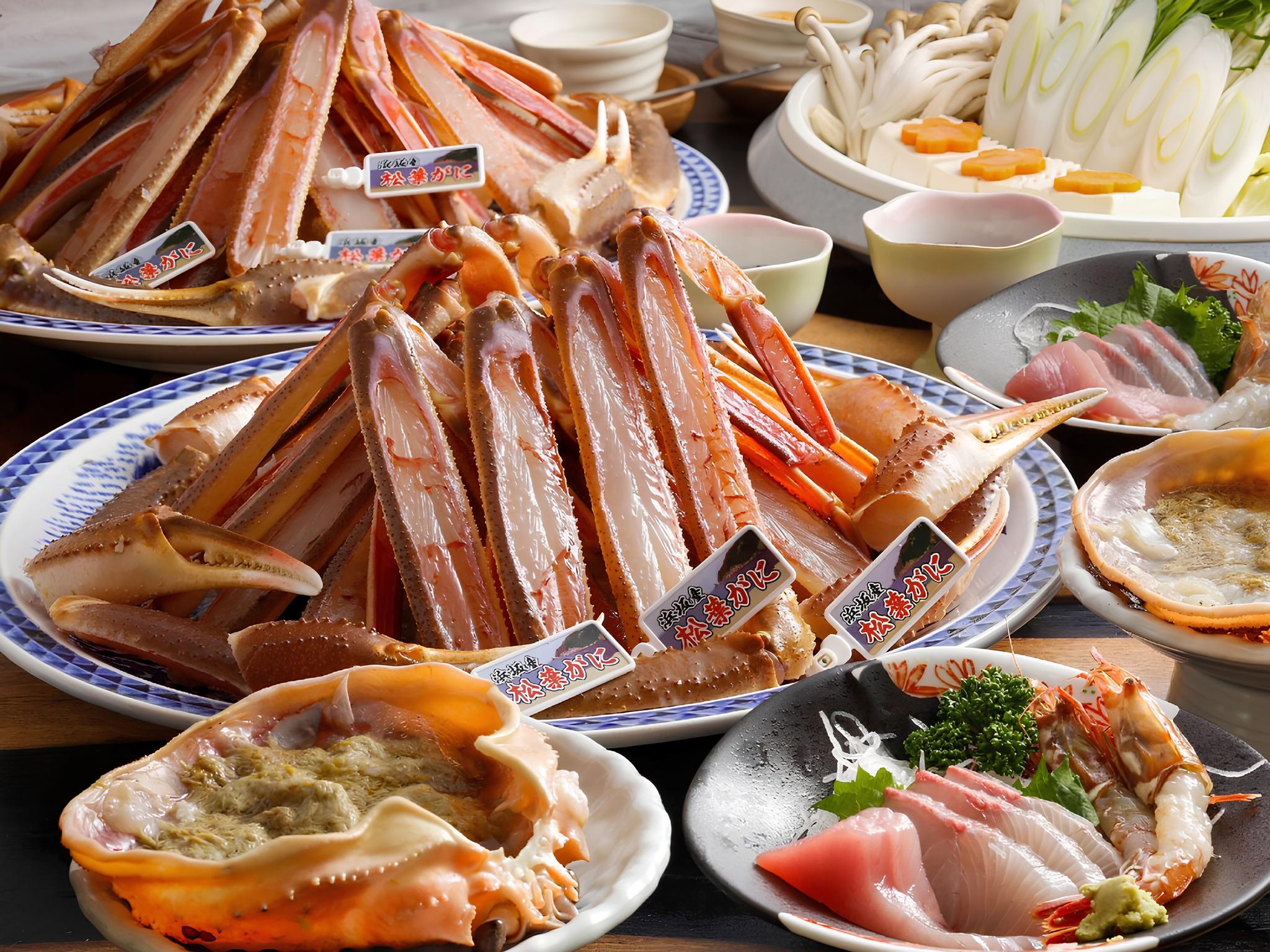 Labeled raw Matsuba snow crab from Hamasaka Port, one-crab course. From 41,800 yen per person for one night with two meals (based on two guests per room).
Labeled raw Matsuba snow crab from Hamasaka Port, one-crab course. From 41,800 yen per person for one night with two meals (based on two guests per room).
From November 6 to around March 20, it’s the season to enjoy Matsuba snow crab, the king of crab, at its absolute best. Join crab connoisseurs who flock to Hamasaka from across Japan and revel in a transcendent crab experience.
BOOK YOUR STAY IN HAMASAKA
Follow the Steam—A Stroll in a Hot-Spring Town
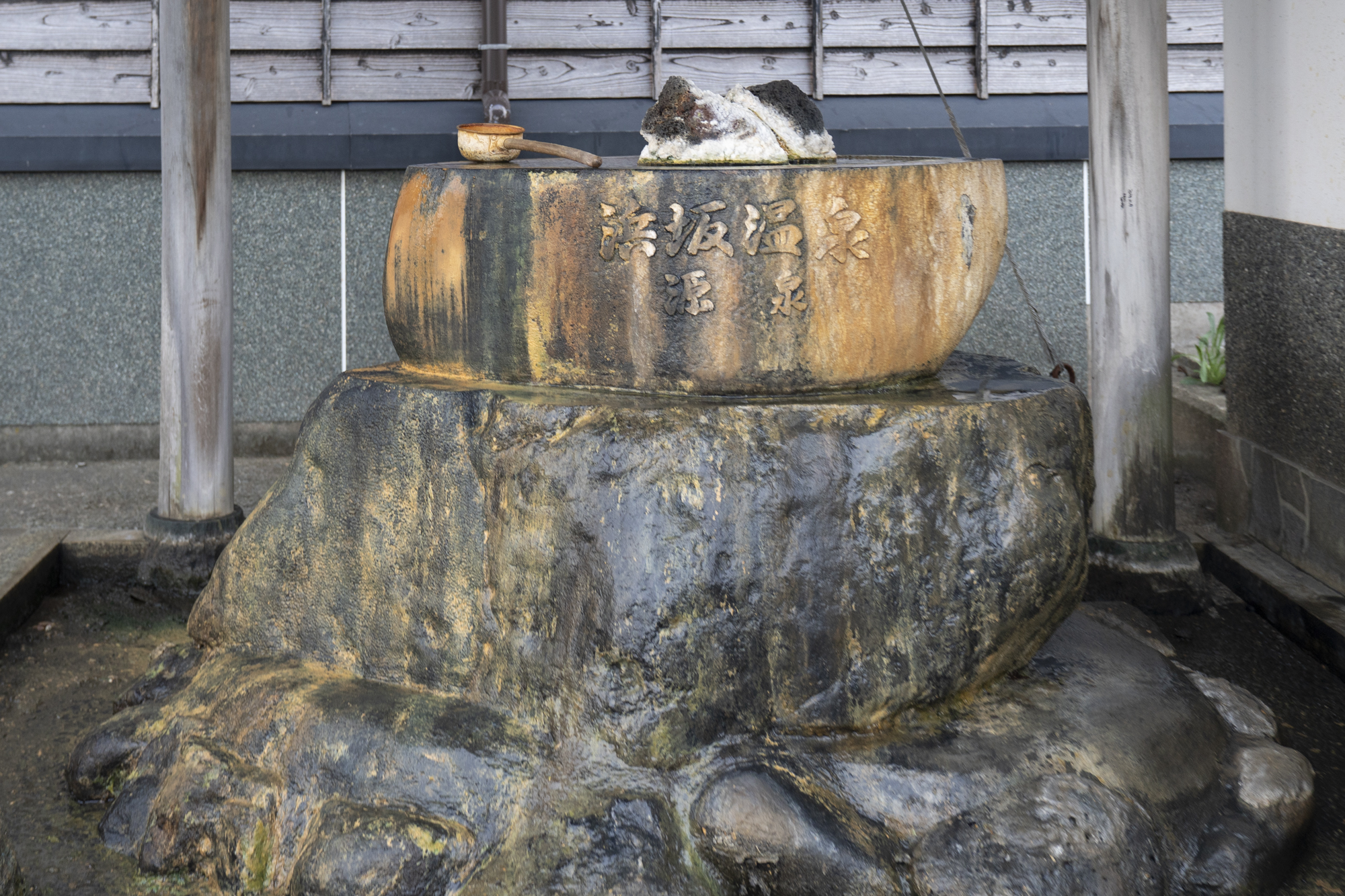 A spring source tower near Utopia Hamasaka.
A spring source tower near Utopia Hamasaka.
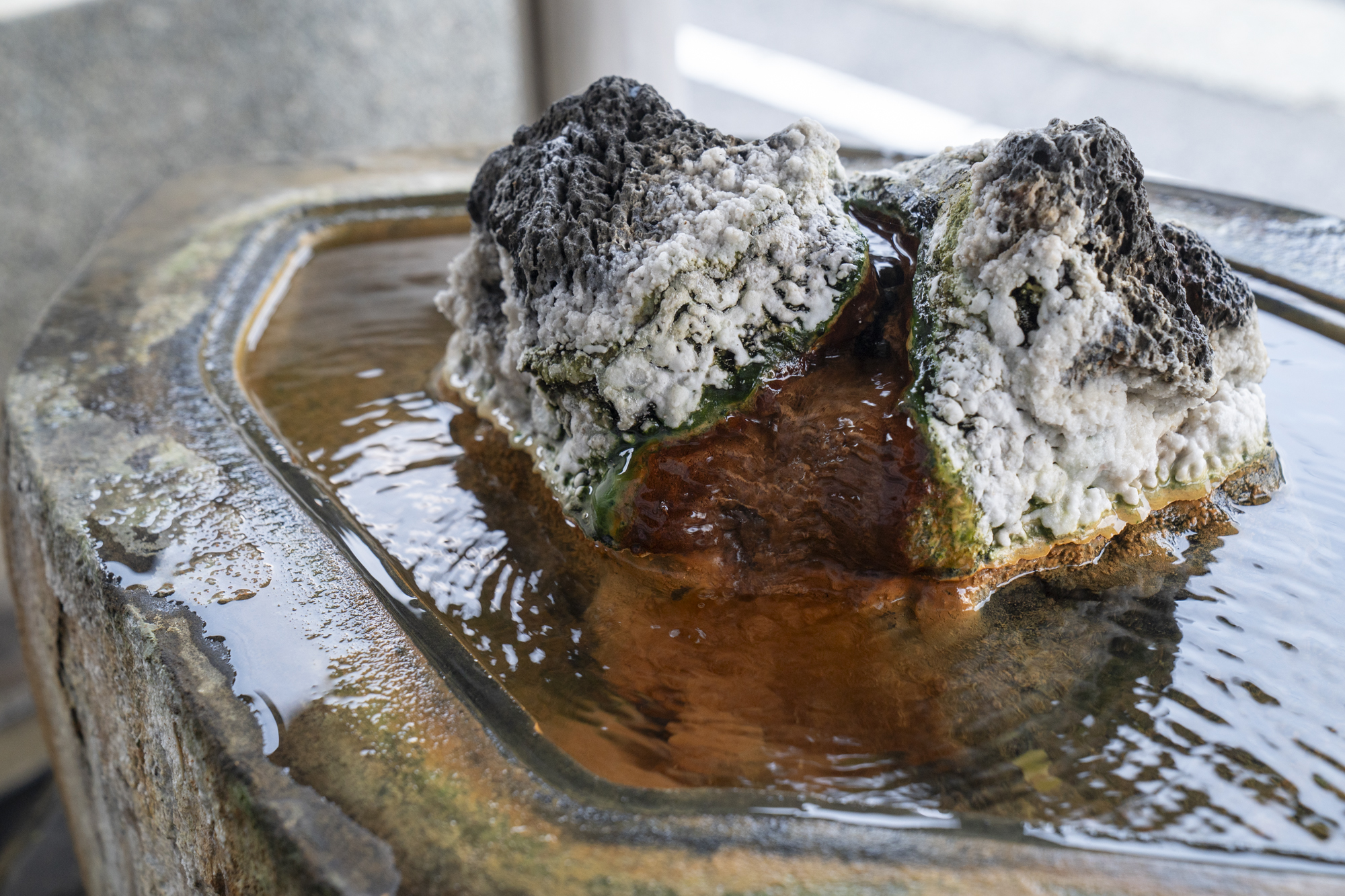 Hamasaka Onsen’s source temperature is 73°C; the water type is a chloride spring.
Hamasaka Onsen’s source temperature is 73°C; the water type is a chloride spring.
Hamasaka Onsen-kyo, where Syofuso is located, is the collective name for three hot springs—Hamasaka Onsen, Shichikama Onsen, and Futsukaichi Onsen—and is the only area in Hyogo designated by Japan’s Ministry of the Environment as a National Hot Spring Health Resort. Symbolizing this bounty, three onsen towers stand around town, where plumes of steam rising from freely flowing sources lend a nostalgic charm to the streetscape.
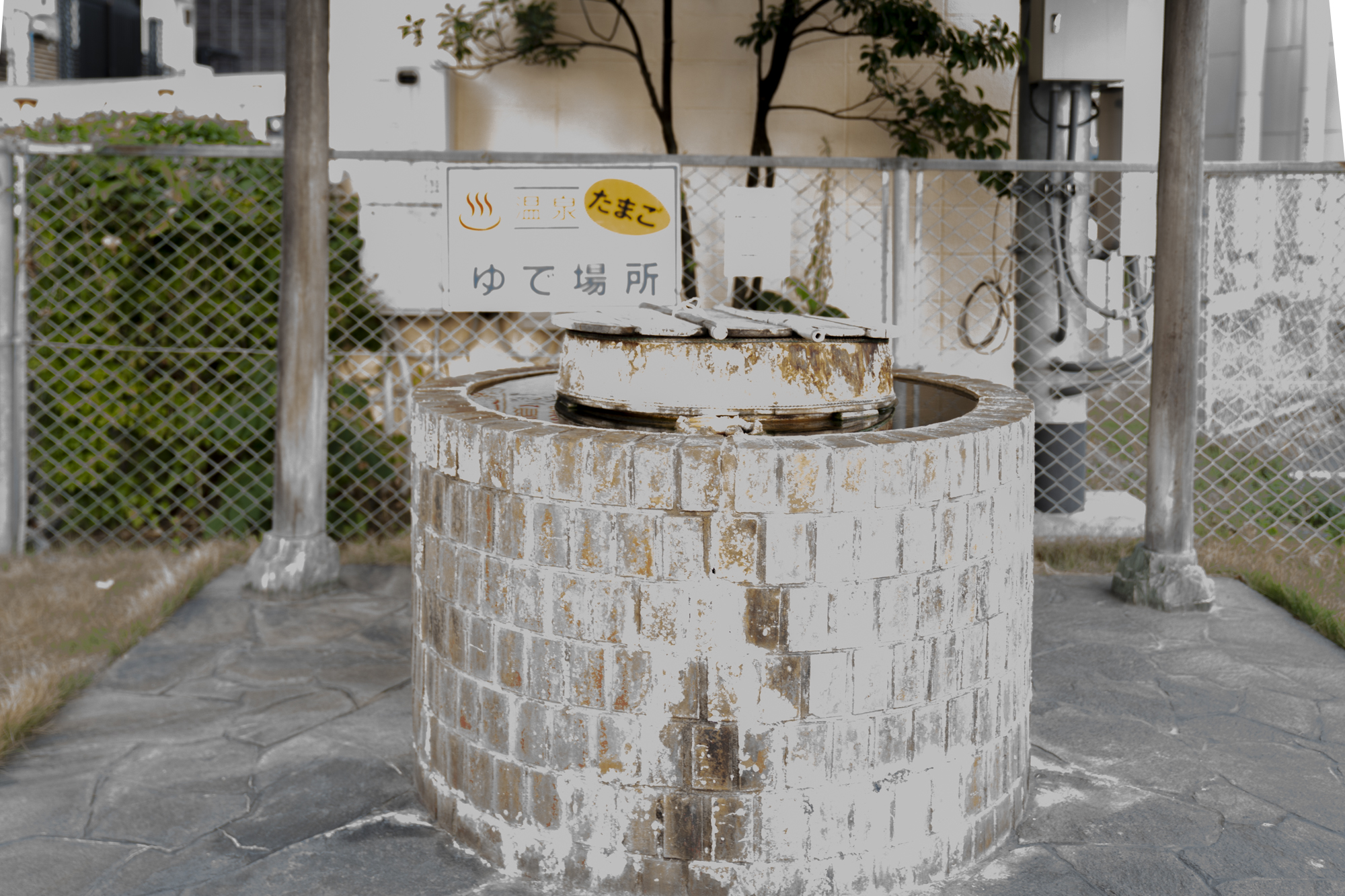 An onsen egg–boiling spot within the grounds of Utopia Hamasaka.
An onsen egg–boiling spot within the grounds of Utopia Hamasaka.
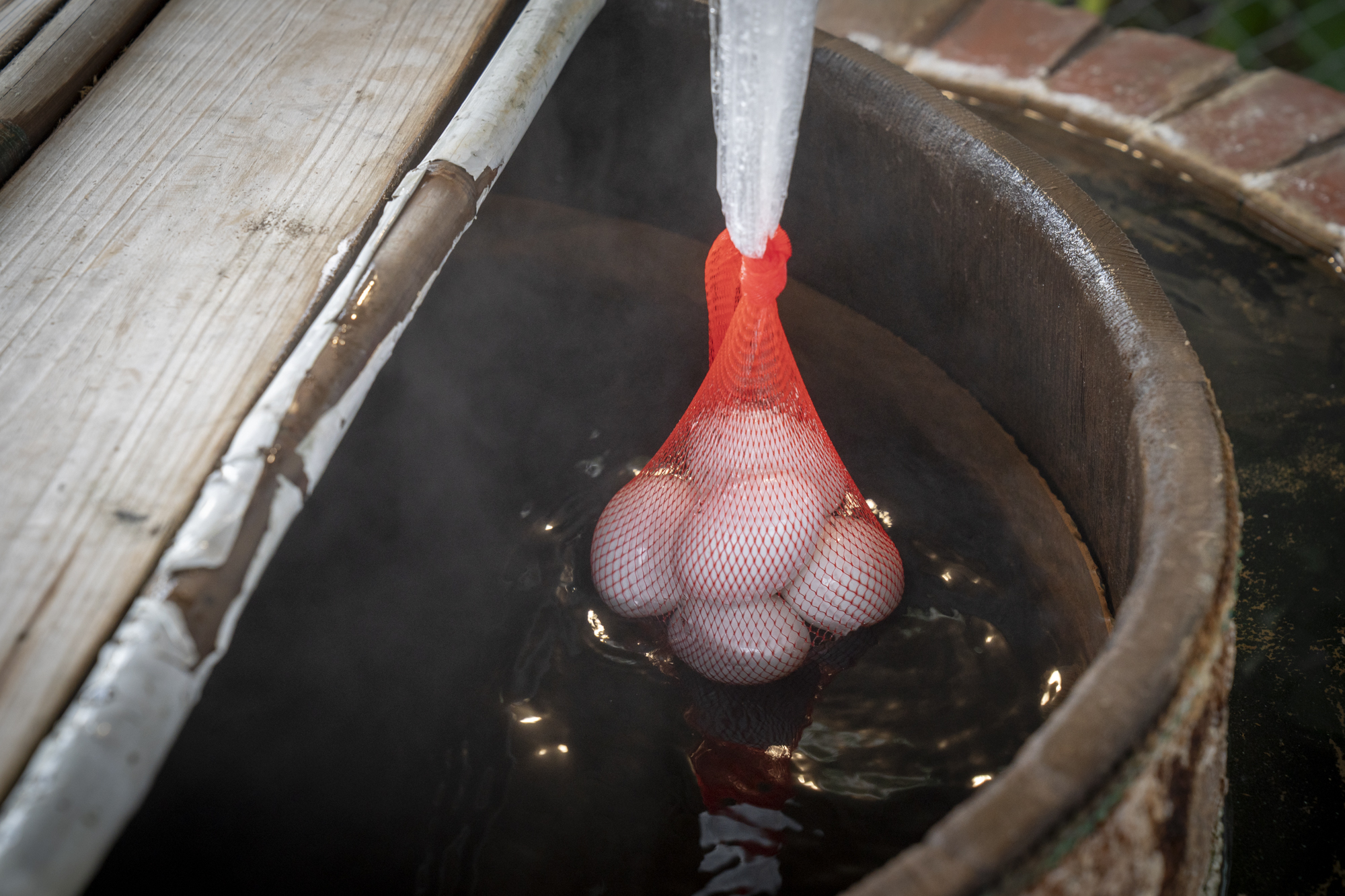 Eggs and the mesh bags for making onsen eggs can be purchased at nearby supermarkets.
Eggs and the mesh bags for making onsen eggs can be purchased at nearby supermarkets.
Within the grounds of the day-use hot-spring facility Utopia Hamasaka is a dedicated spot for making onsen eggs using the natural hot-spring source. In a scene unique to a hot-spring town, local supermarkets even stock special mesh bags alongside the egg displays.
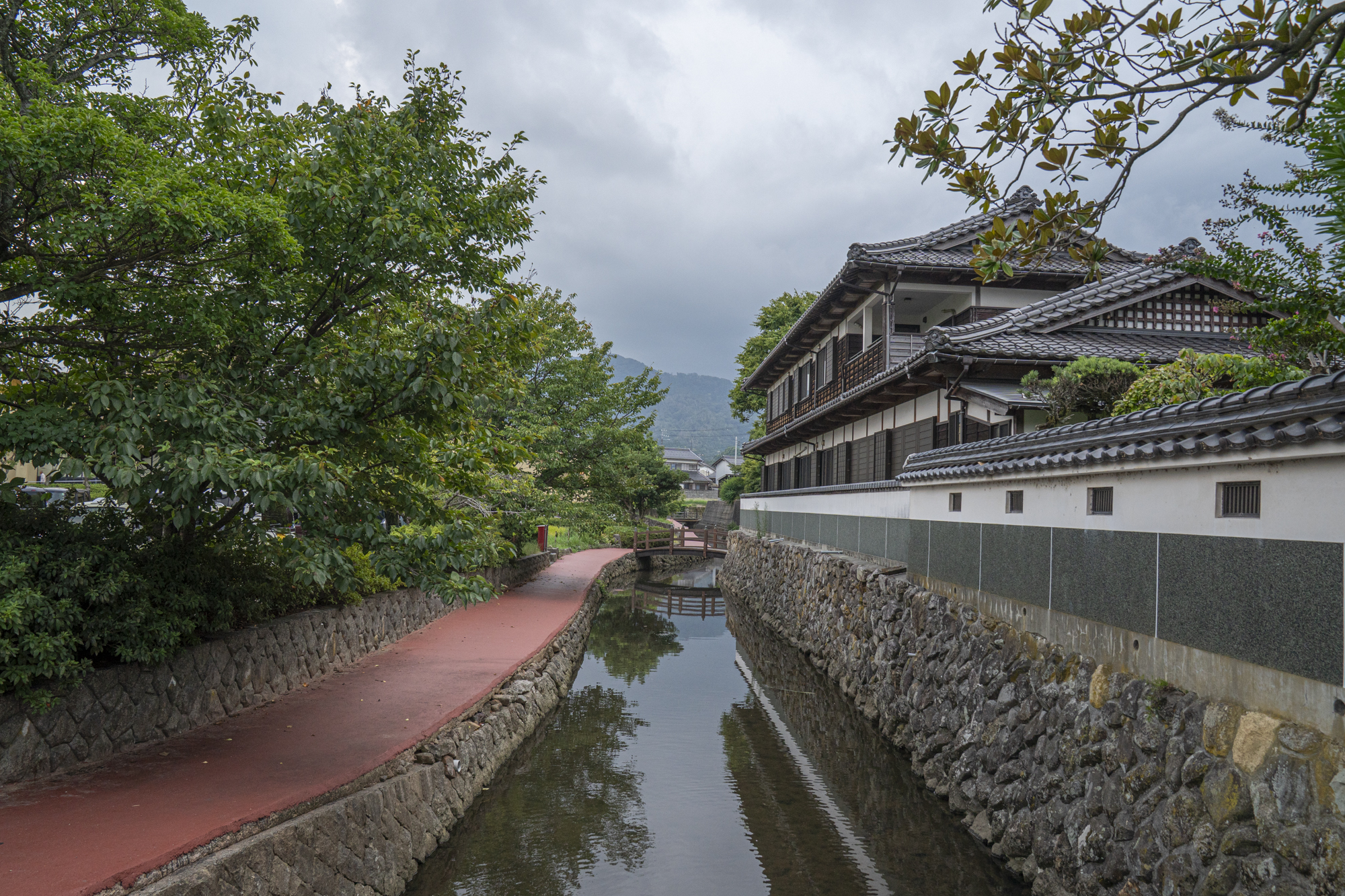 Ajiwara Komichi Road retains the atmosphere of the Edo period.
Ajiwara Komichi Road retains the atmosphere of the Edo period.
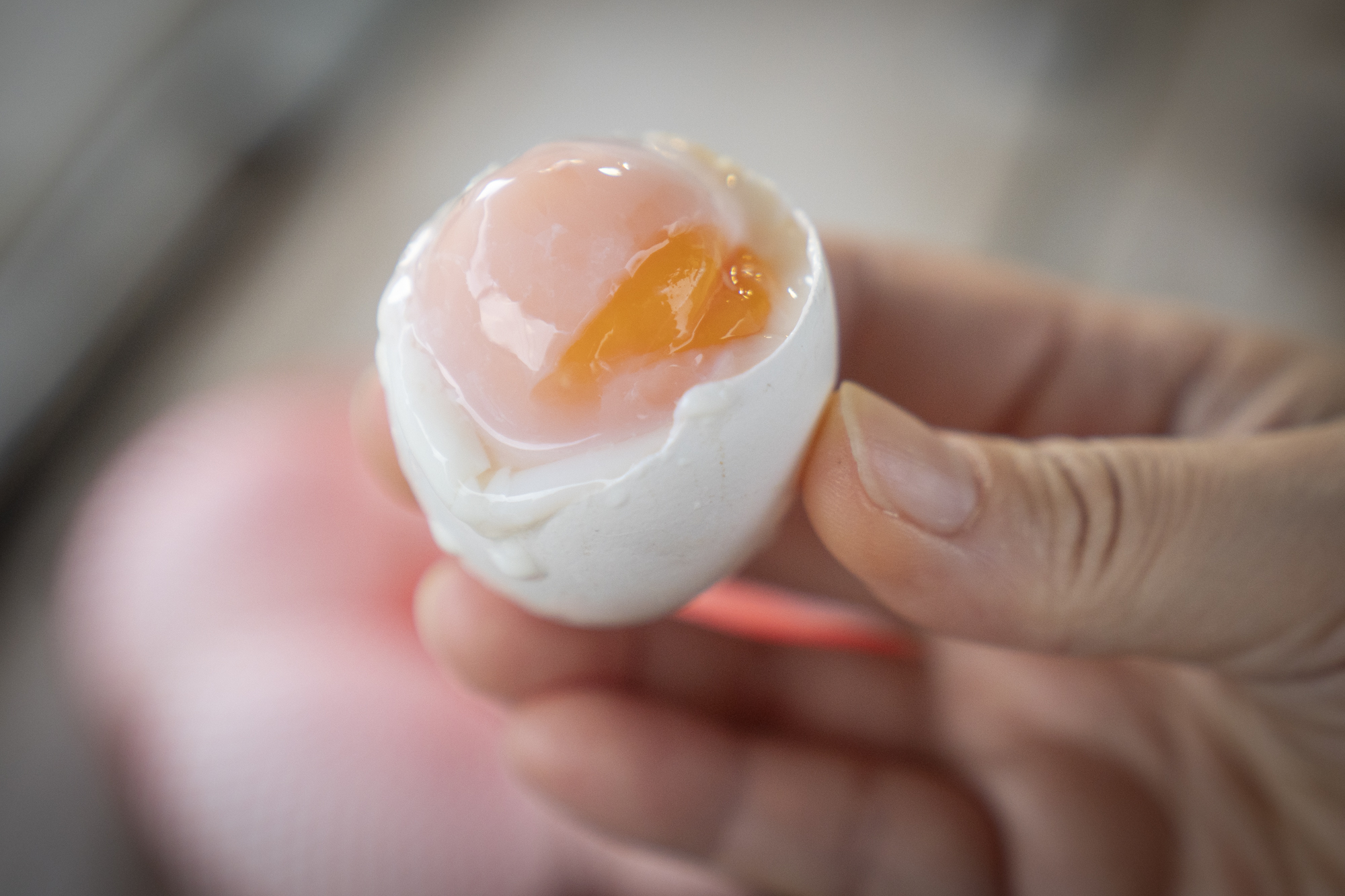 After about 35 minutes, your onsen eggs are silky and set.
After about 35 minutes, your onsen eggs are silky and set.
Onsen eggs take about 35 minutes. While you wait, wander streets that retain the feel of the Edo period. Ajiwara Komichi Road, which passes near Utopia Hamasaka, is a roughly 500-meter promenade along the lower reaches of the Ajiwara River through town. Historic homes, old stone walls, a lifting bridge, and a boat landing all hint at the days when river and sea trade bustled here. Return from your unhurried stroll just as your eggs are perfectly done—and after tasting them, slip into a day bath to fully refresh.
A Pilgrimage for Train Lovers: Sea-of-Japan Vistas and Railway Heritage Await
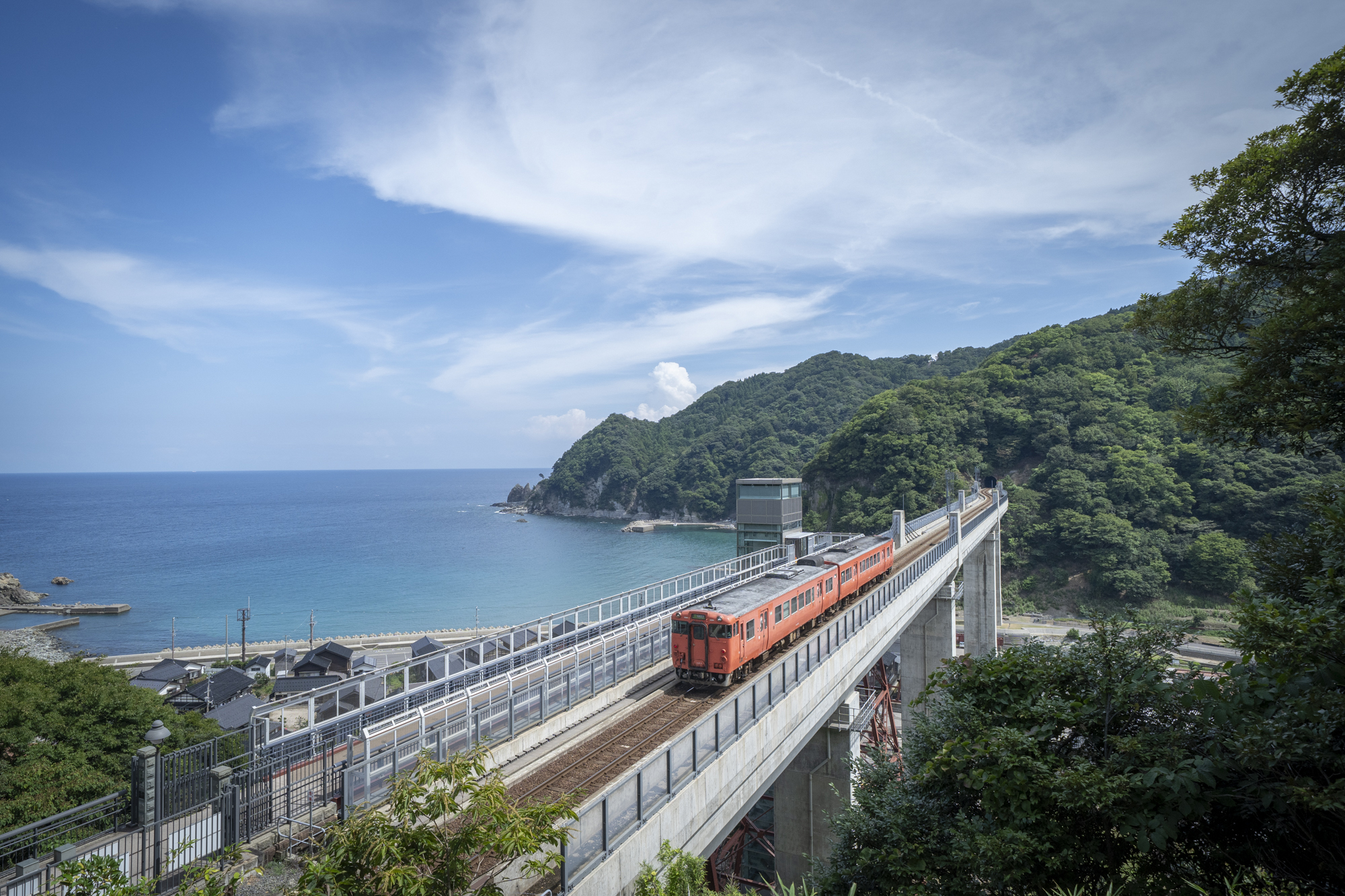
From Hamasaka Station, it’s about 14 minutes on the San’in Main Line. Step off at JR Amarube Station and right before you rises Amarube Railway Bridge “Station in the Sky,” an observation deck 41.5 meters high that reuses the original piers of the former Amarube Railway Bridge, which supported the JR San’in Main Line for over a century. It’s a spectacular lookout with sweeping views of the Sea of Japan.
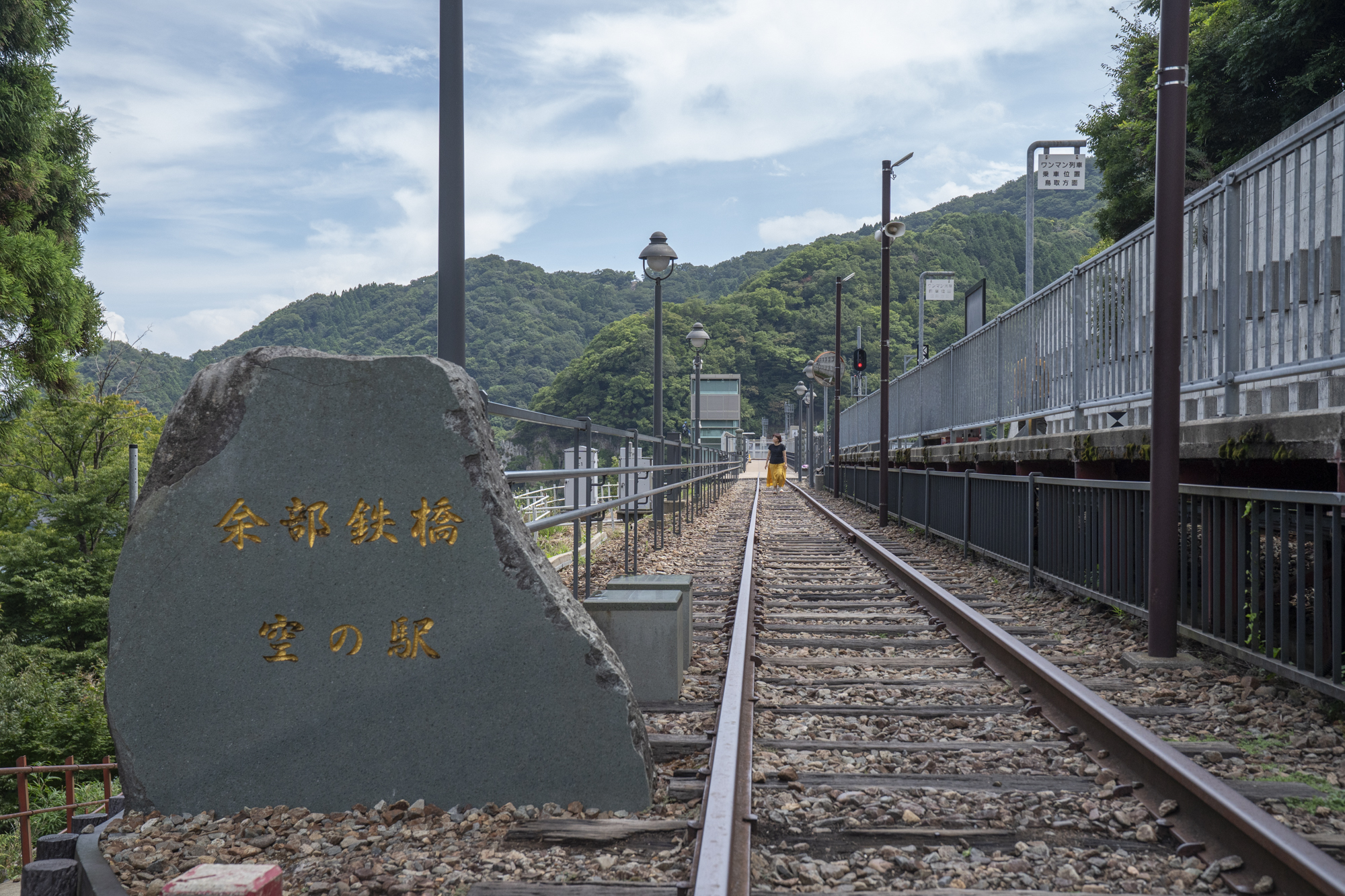 Remnants of the former track run alongside the JR Amarube Station platform.
Remnants of the former track run alongside the JR Amarube Station platform.
Walk from the JR Amarube Station platform along the preserved former track and you can literally tread the rails where trains once ran—a thrill even for non-railfans.
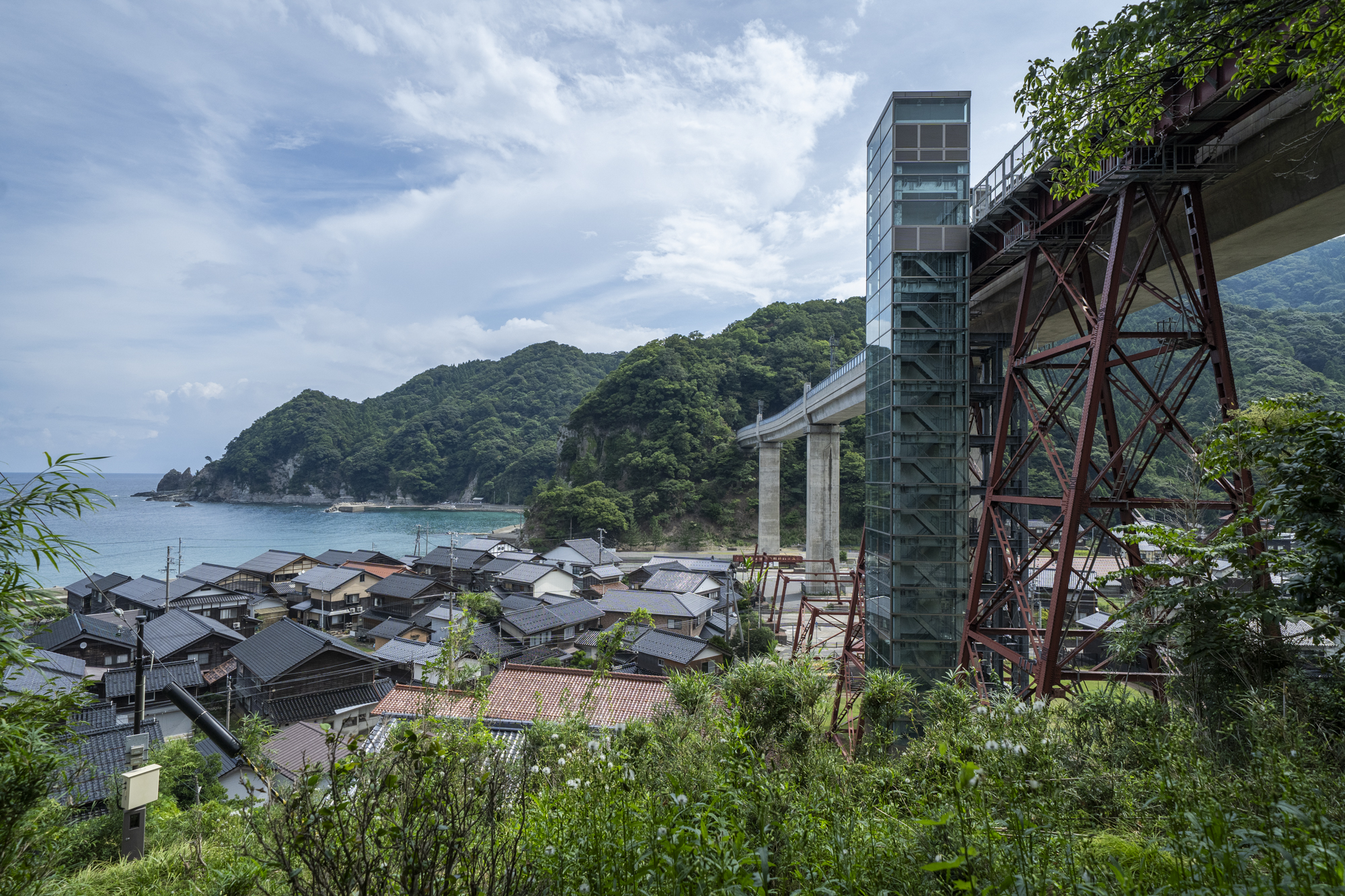 The 41.5-meter-tall Amarube Crystal Tower links ground level with Sky Station.
The 41.5-meter-tall Amarube Crystal Tower links ground level with Sky Station.
The glass-walled elevator Amarube Crystal Tower connects the observation deck to the ground. Enjoy about 45 seconds of airy ascent with a panoramic view of the Sea of Japan.
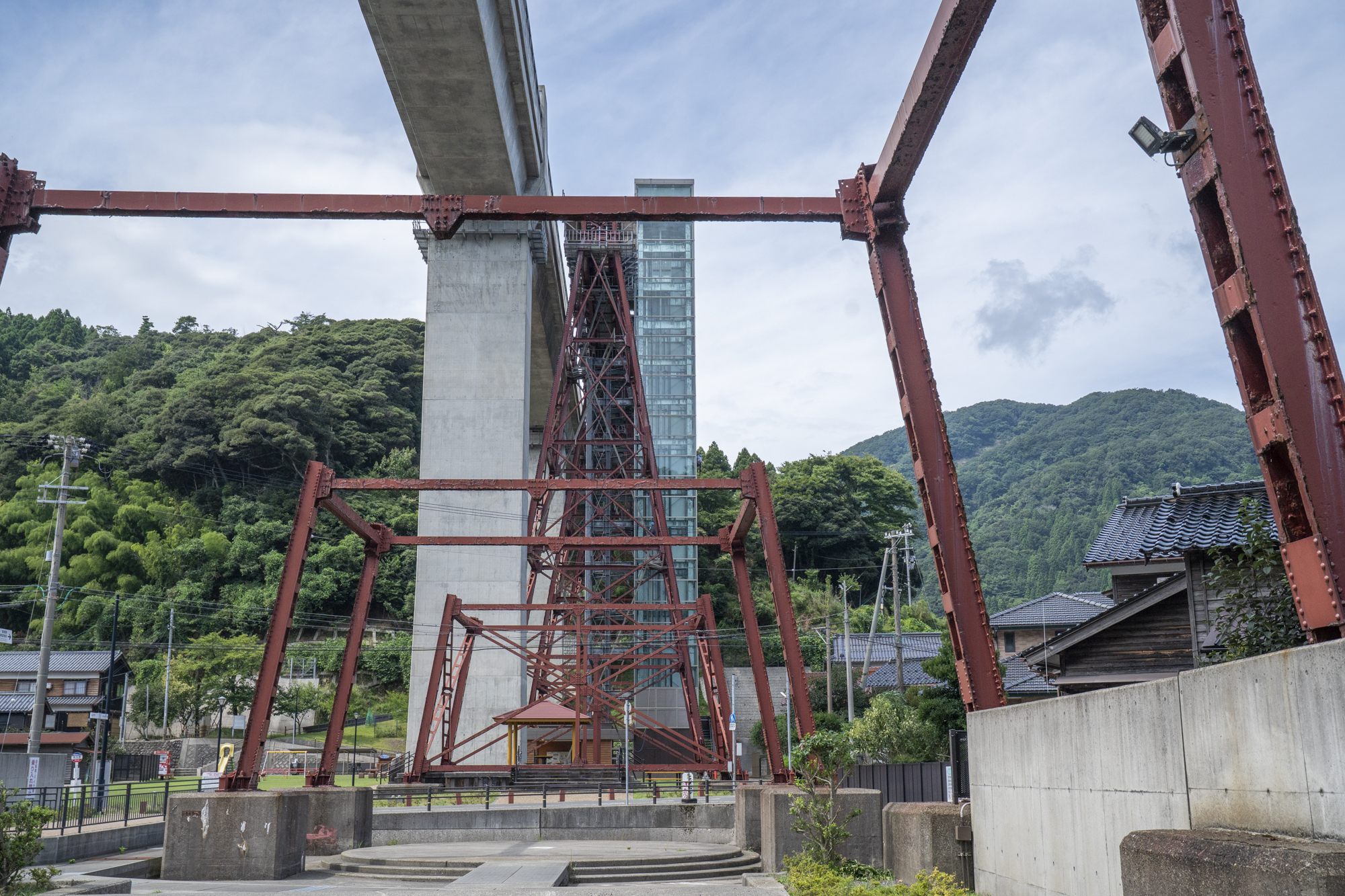 A park that repurposes remnants of the decommissioned Amarube Railway Bridge.
A park that repurposes remnants of the decommissioned Amarube Railway Bridge.
 Sora-chan, the African spurred tortoise who serves as Sky Station’s “stationmaster.”
Sora-chan, the African spurred tortoise who serves as Sky Station’s “stationmaster.”
A park spreads out below the observation deck, with an azumaya gazebo and open lawn that incorporate the old bridge piers. One corner is home to Sora-chan, the tortoise who “runs” Station in the Sky; during the daily stroll times of 9:30–10:30 and 15:00–16:00, you can watch Sora-chan amble about the grass up close.
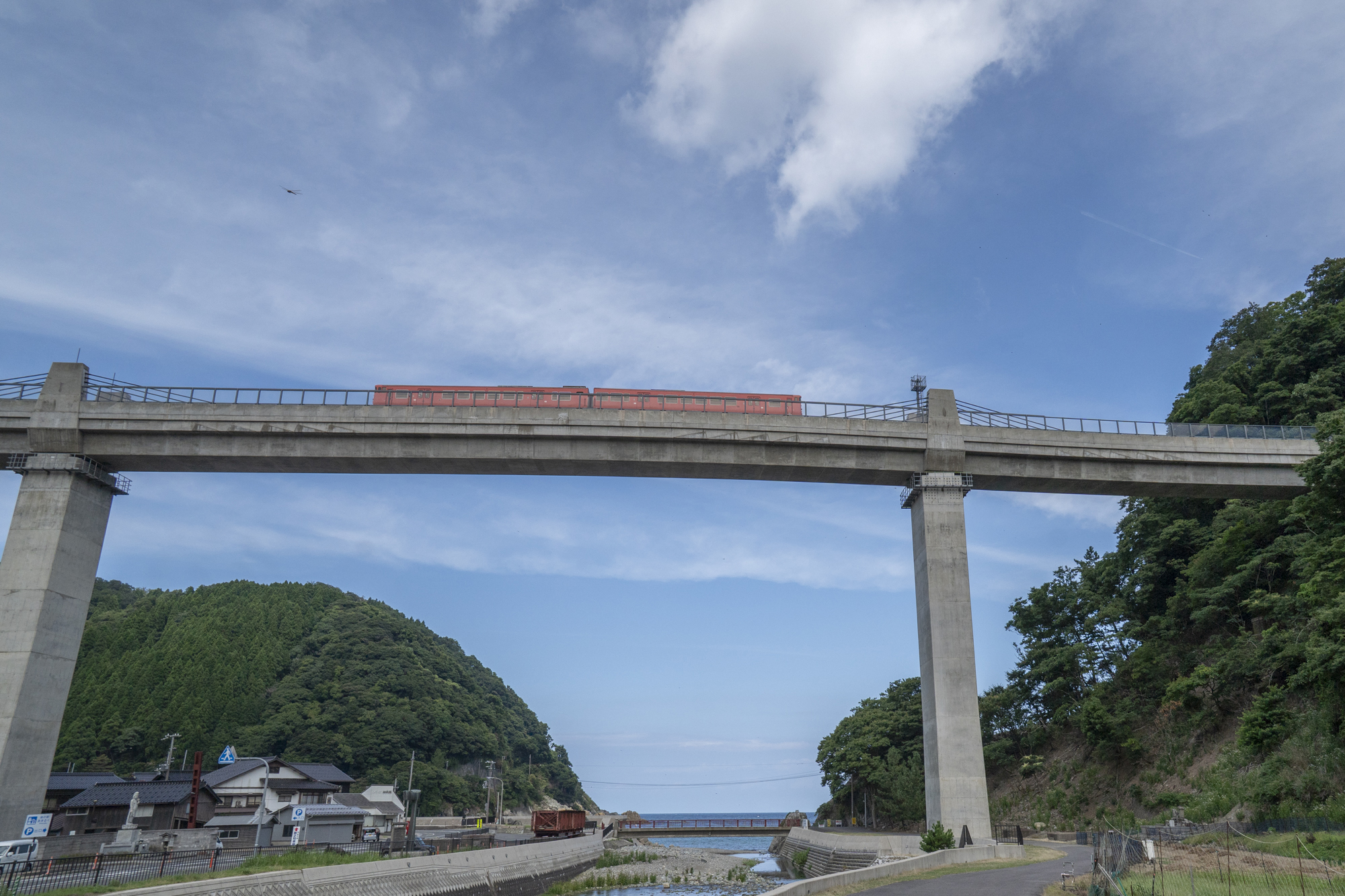 From ground level, the view of the Amarube Railway Bridge soaring toward the Sea of Japan beyond is breathtaking.
From ground level, the view of the Amarube Railway Bridge soaring toward the Sea of Japan beyond is breathtaking.
The composition of the Amarube Railway Bridge, the passing trains, and the Sea of Japan is just as powerful seen from below. Next door, Michi-no-Eki Amarube features an exhibit on the bridge’s history and local specialty foods—perfect for making station wait times fly by.
BOOK YOUR STAY IN HAMASAKA
Ride the Ametsuchi Sightseeing Train Along the San’in Coast
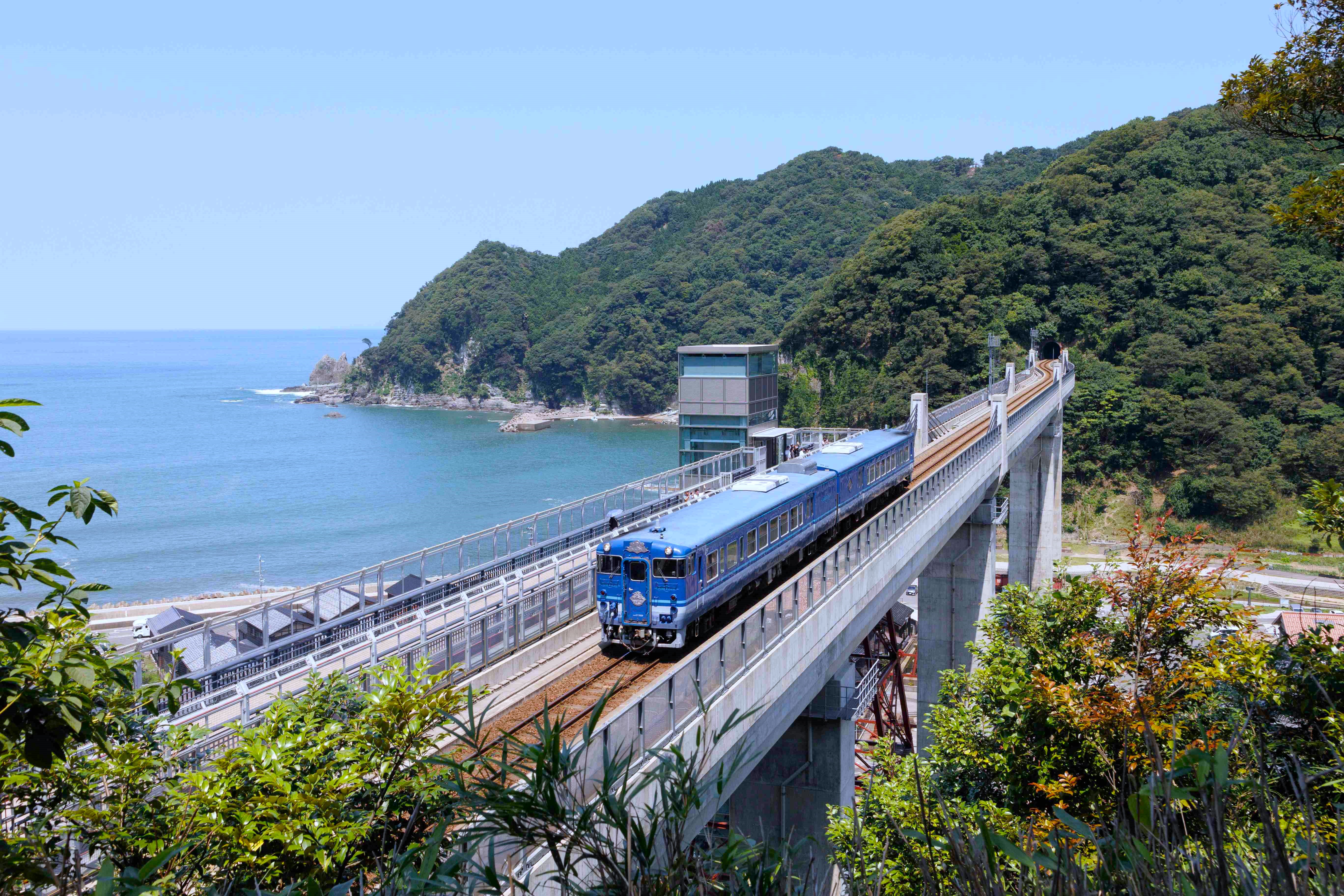 The Ametsuchi Sightseeing Train crossing the Amarube Railway Bridge, melting into the Sea of Japan backdrop.
The Ametsuchi Sightseeing Train crossing the Amarube Railway Bridge, melting into the Sea of Japan backdrop.
On select days, the Ametsuchi Sightseeing Train operates between Kinosaki Onsen Station and Tottori Station on the San’in Main Line. The San’in region is rich in the roots of Japanese culture—shrines, sake, kabuki, sumo—and the cradle of many myths. With the concept “Native Japanese,” Ametsuchi invites travelers to discover a “timeless yet new Japan” embraced by the blessings of heaven and earth.
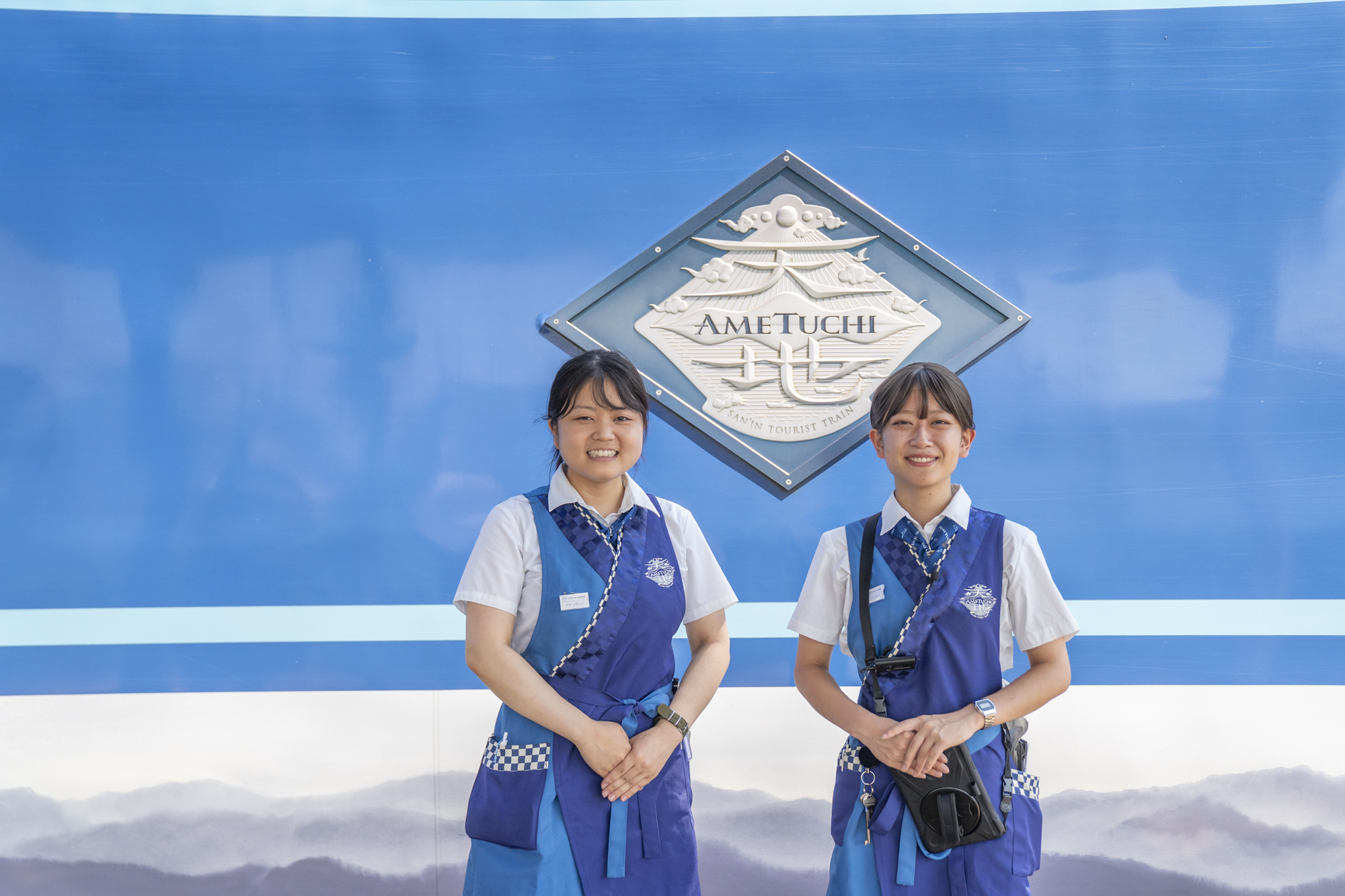 Attendants ride the full route, offering onboard sales along the line.
Attendants ride the full route, offering onboard sales along the line.
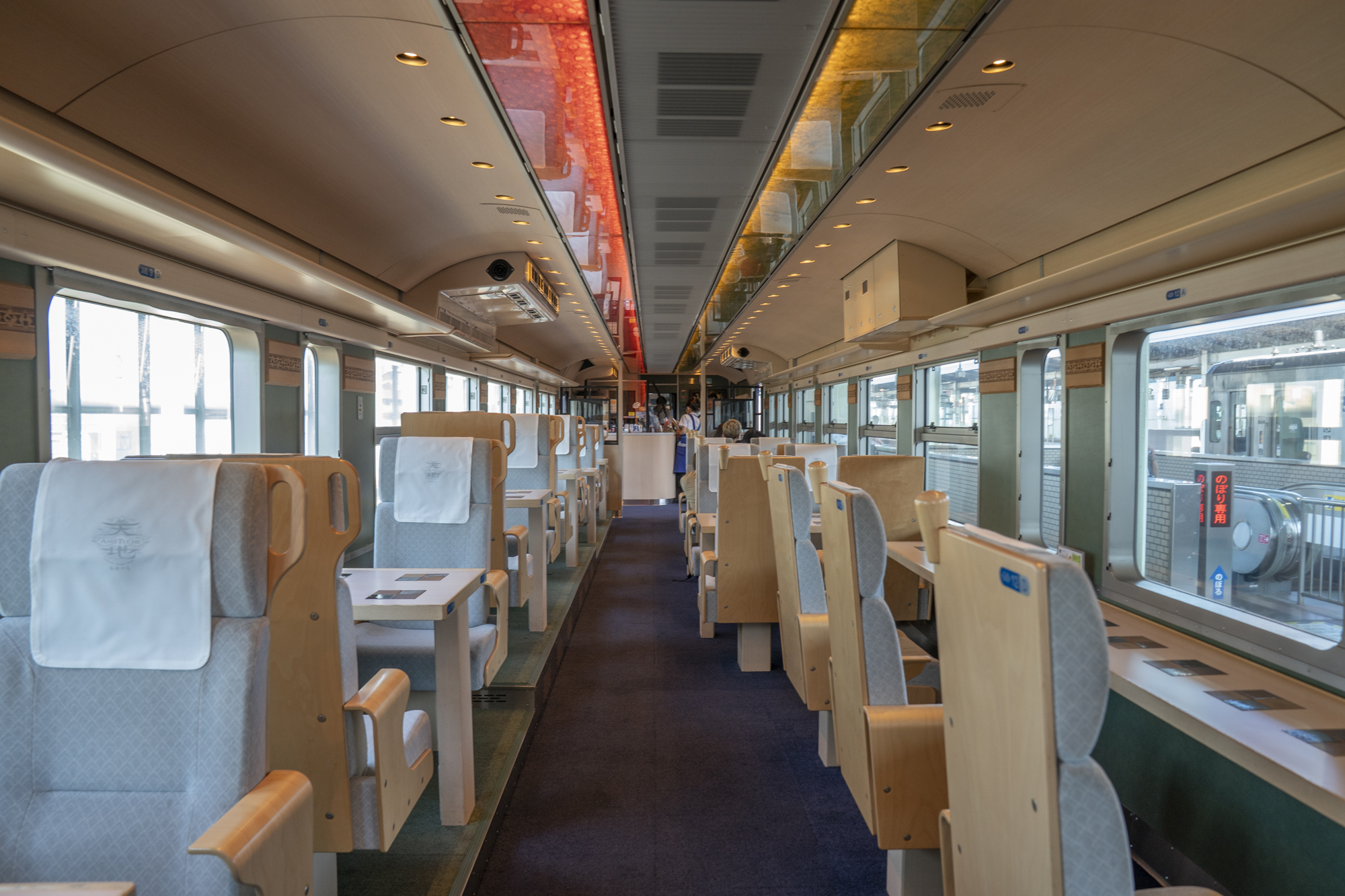 All seats are reserved, with mainly two-person seats plus four-person and counter seating.
All seats are reserved, with mainly two-person seats plus four-person and counter seating.
The two-car trainset features interiors unified by materials from Tottori and Shimane, with wall and floor colors that evoke San’in’s mountains and the Sea of Japan. Ceiling lighting incorporates Inshu washi paper, table accents use Sekishu roof tiles—crafts from across the region appear throughout, letting you experience San’in’s appeal without leaving your seat.
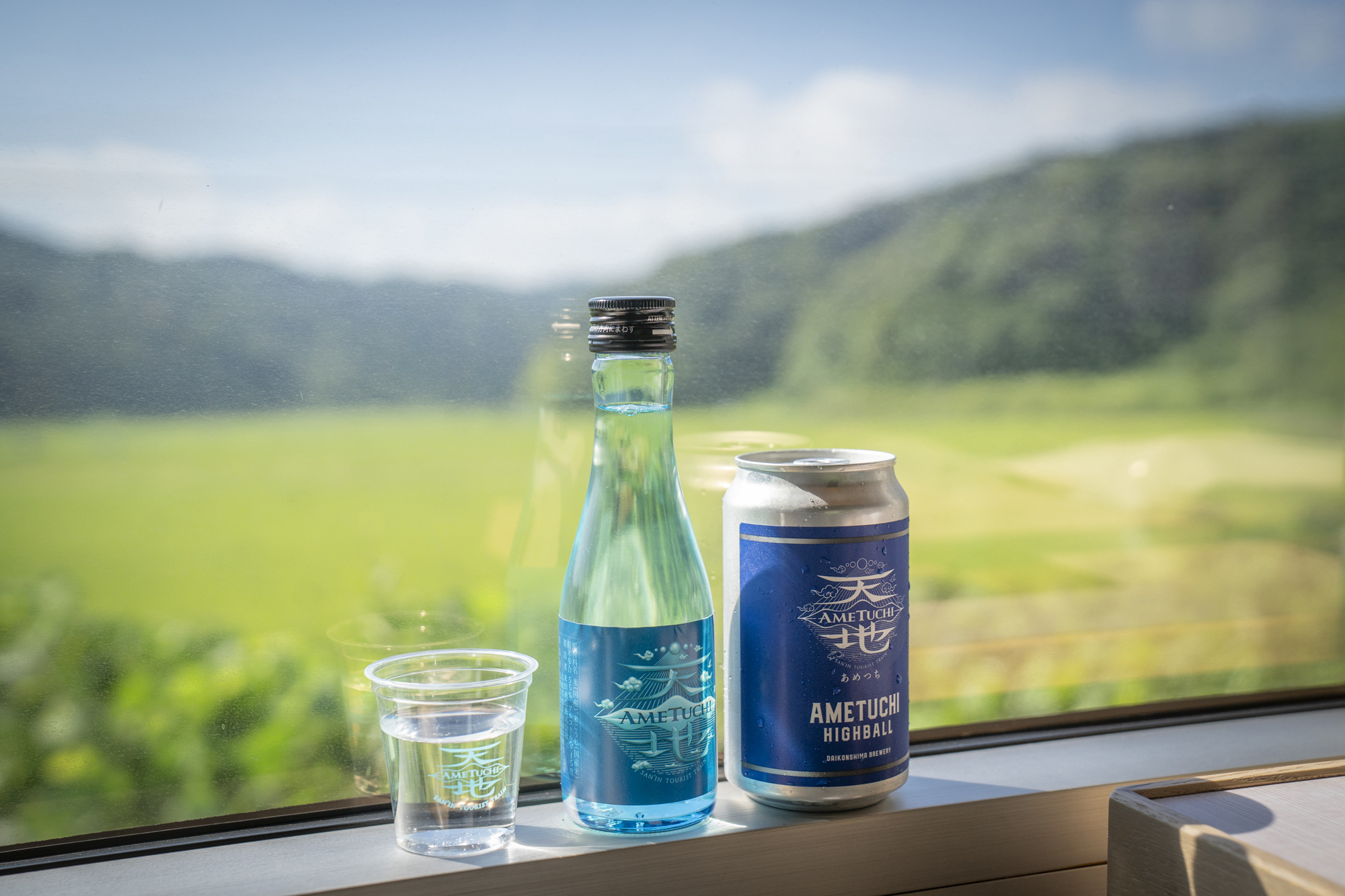 Ametsuchi Highball and Ametsuchi–label Hana Kanzashi by Yoneda Sake Brewery.
Ametsuchi Highball and Ametsuchi–label Hana Kanzashi by Yoneda Sake Brewery.
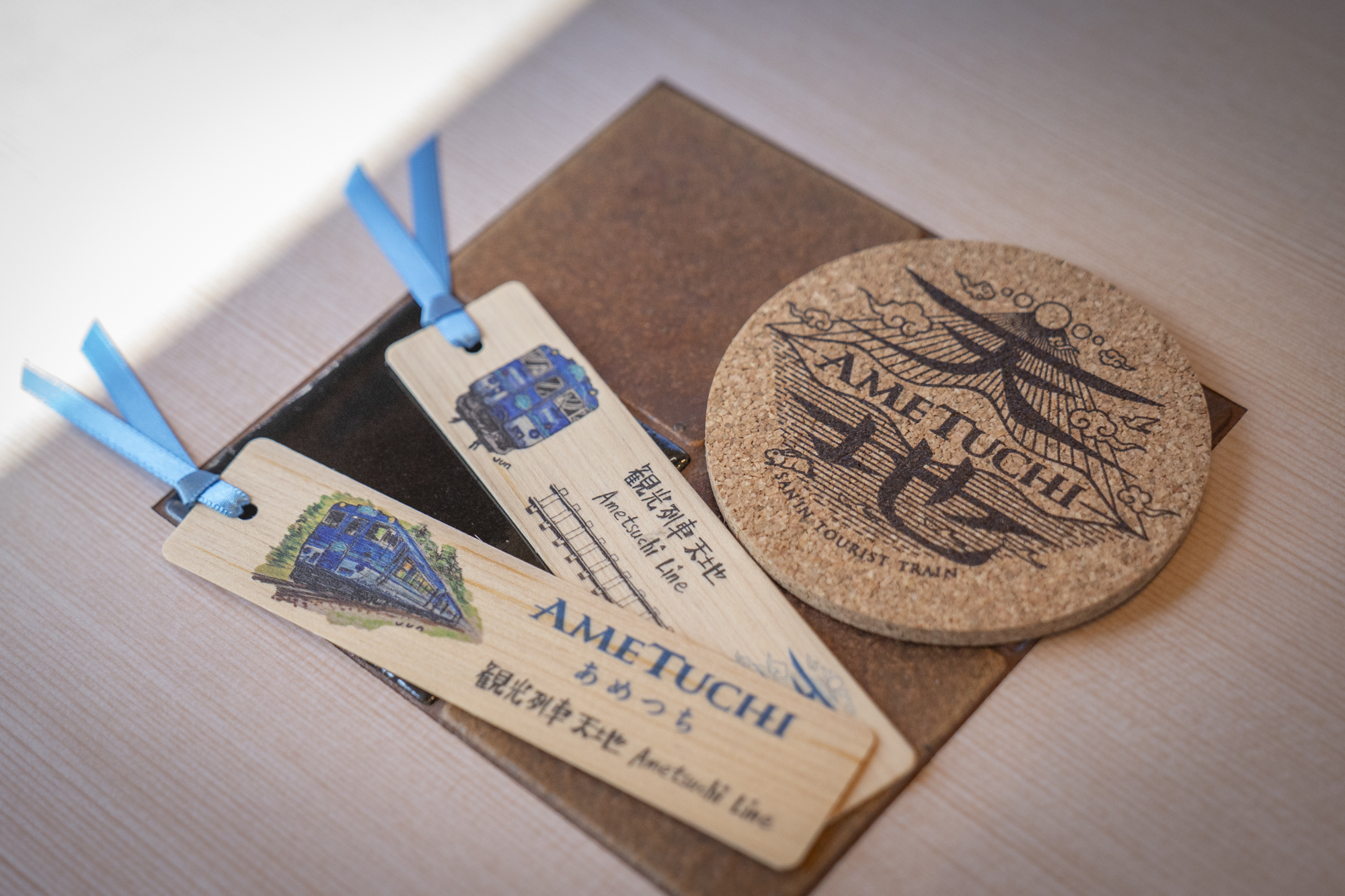 Wooden bookmarks (set of 2) and train coasters.
Wooden bookmarks (set of 2) and train coasters.
At the sales counter, choose from San’in sake, snacks, and sweets, as well as train-only original goods. Stationery made with Hiikawa washi paper, wooden bookmarks, and more make ideal mementos.
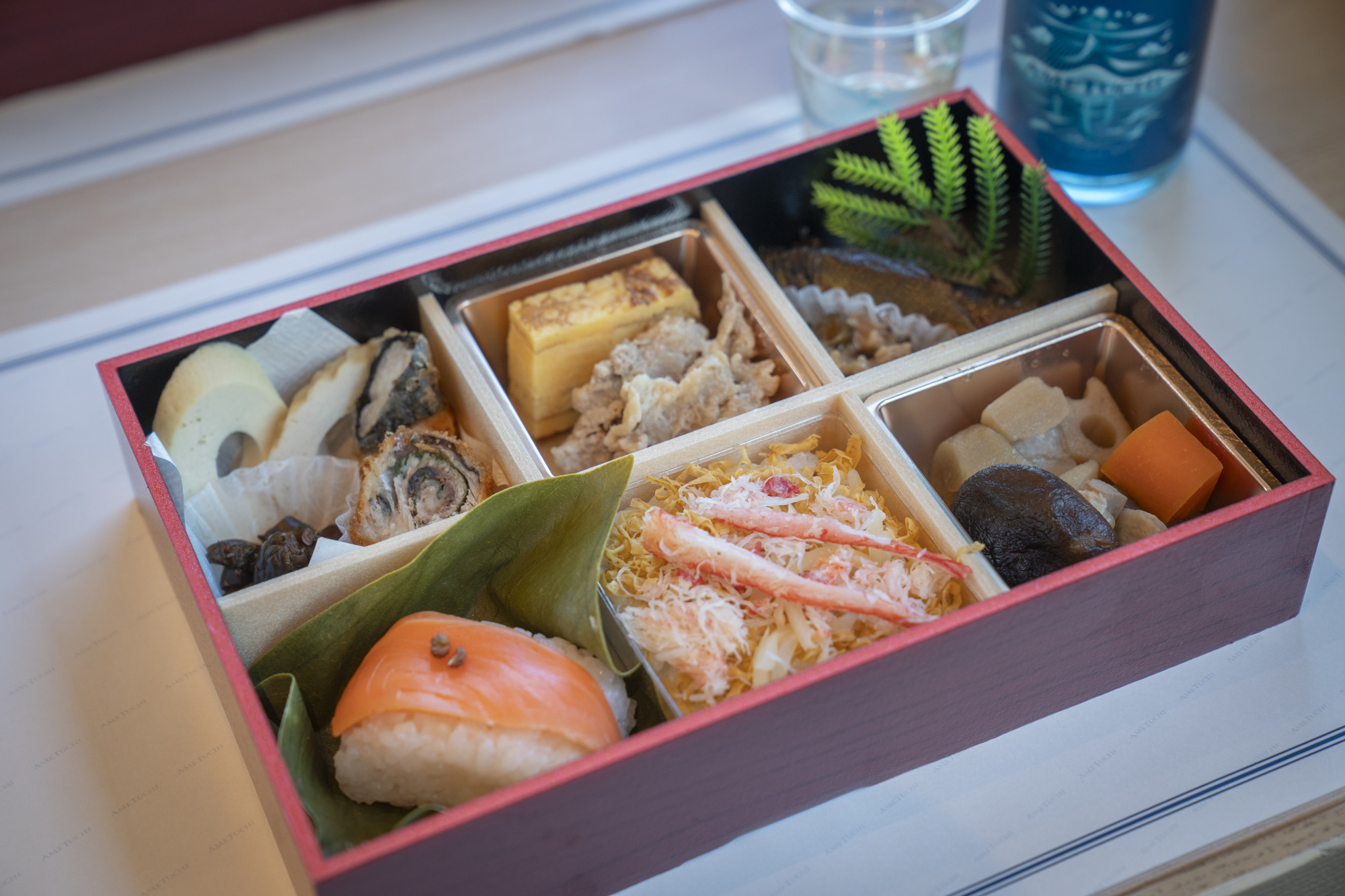 Ametsuchi Special Bento (with tea) 2,250 yen (advance reservation required; as of August 2025).
Ametsuchi Special Bento (with tea) 2,250 yen (advance reservation required; as of August 2025).
If you ride the full stretch from Kinosaki Onsen Station to Tottori Station, you can also enjoy the onboard, reservation-only Ametsuchi Special Bento. Prepared by Abe Tottorido, a company famed for crab bento, it brings together Tottori specialties and traditional foods in one box—such as the original kani-zushi crab sushi, tofu chikuwa fish-paste treat, sweet-simmered ayu (river fish), and kakinoha-zushi (bite-sized sushi wrapped in persimmon leaves). Savor these soulful local flavors (ideally with regional sake) as the Sea of Japan glides past your window: a quintessential luxury of rail travel.
At the Tottori Sand Dunes, Encounter the Ephemeral Beauty of Sand Shaped by Time
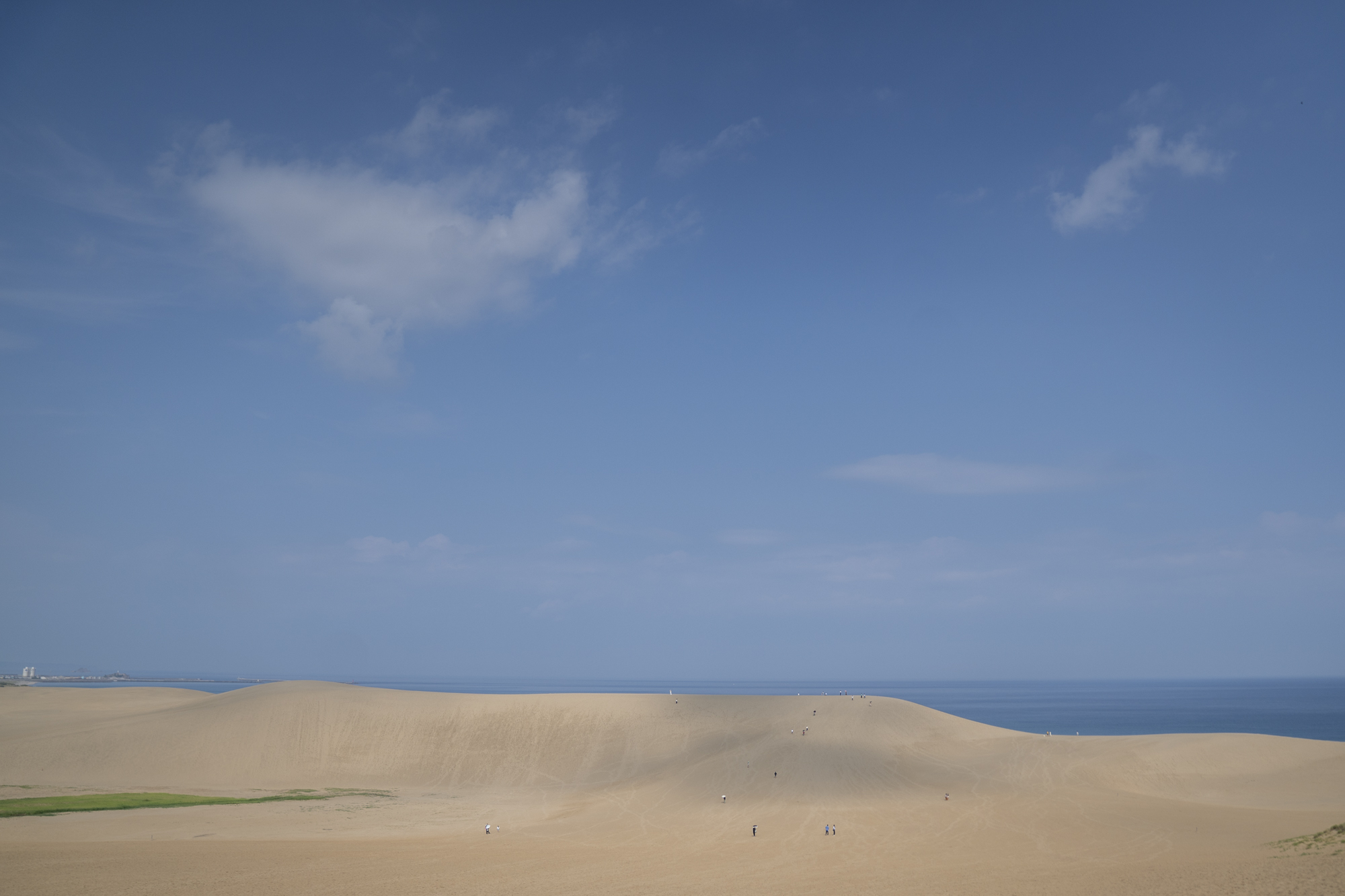 The gentle, sculptural curves of Umanose, a 47-meter-high sand ridge.
The gentle, sculptural curves of Umanose, a 47-meter-high sand ridge.
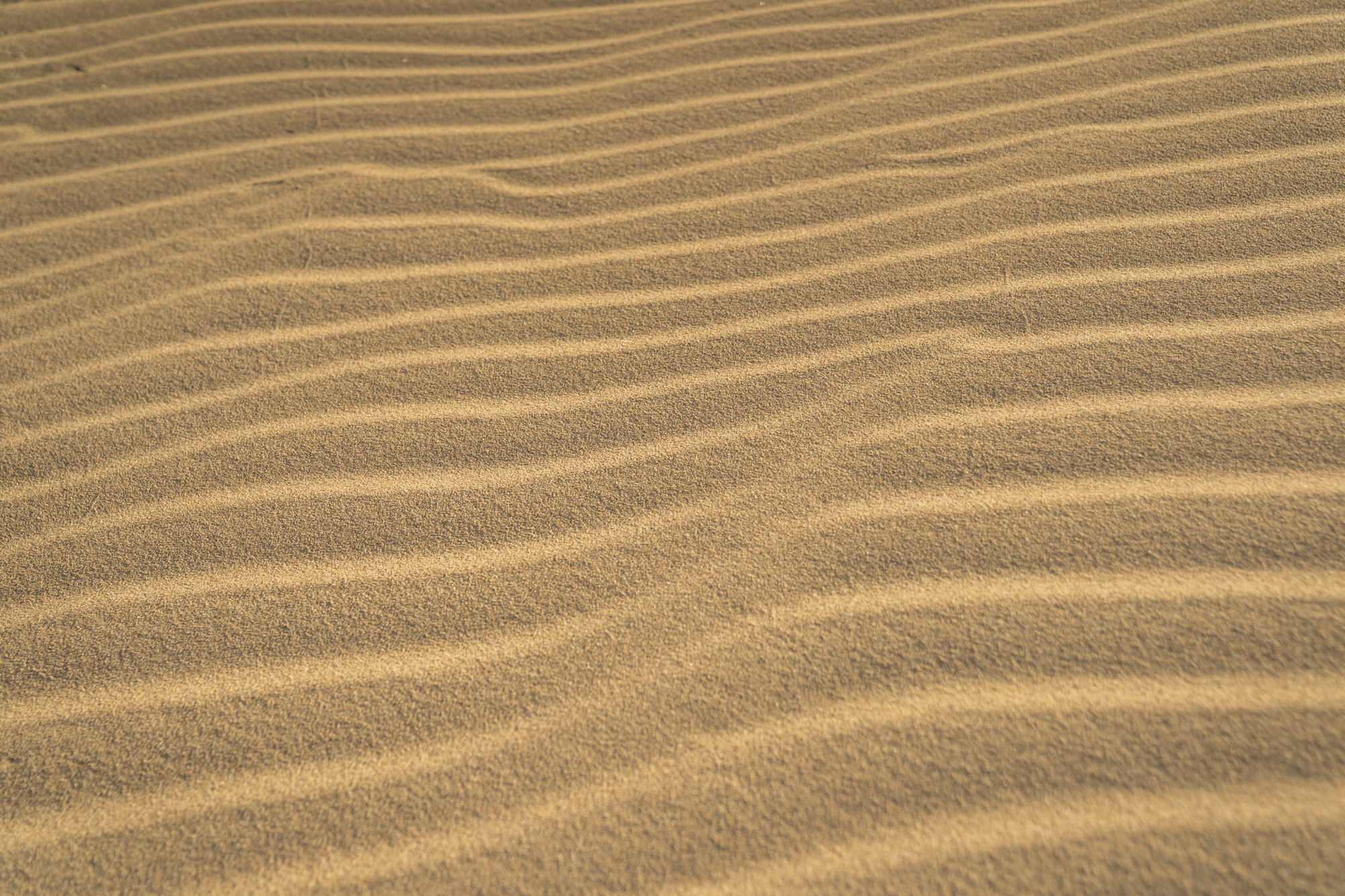 Fewer tourists visit the dunes’ western side, where untouched wind patterns are more often preserved.
Fewer tourists visit the dunes’ western side, where untouched wind patterns are more often preserved.
Bringing this journey through the San’in Kaigan UNESCO Global Geopark to a close is the Tottori Sand Dunes. Formed over millennia as weathered sand was carried by wind and waves, the dunes are a living landscape—ever-changing with the seasons, the weather, and even the hour of the day. Wind-carved ripples and bowl-shaped hollows up to ten meters deep make the terrain itself feel like a vast work of art in motion.
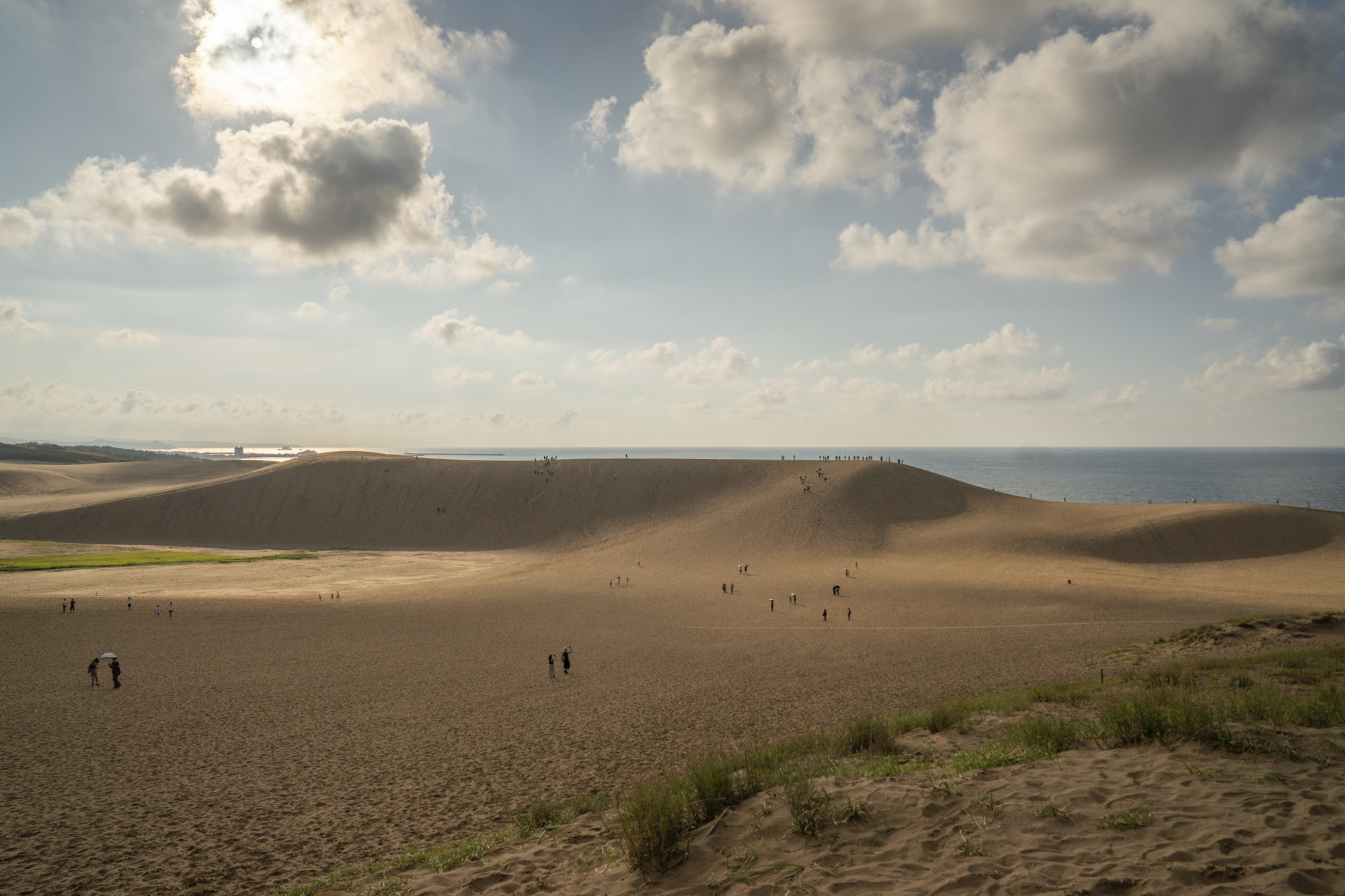 At sunset, the sands glow red, and the contrast becomes strikingly dramatic.
At sunset, the sands glow red, and the contrast becomes strikingly dramatic.
From the entrance, it’s roughly 400 meters in a straight line to the most famous point, Umanose (“the horse’s back”)—a graceful 47-meter-high ridge from whose summit you can gaze out over the sweeping arc of the Sea of Japan.
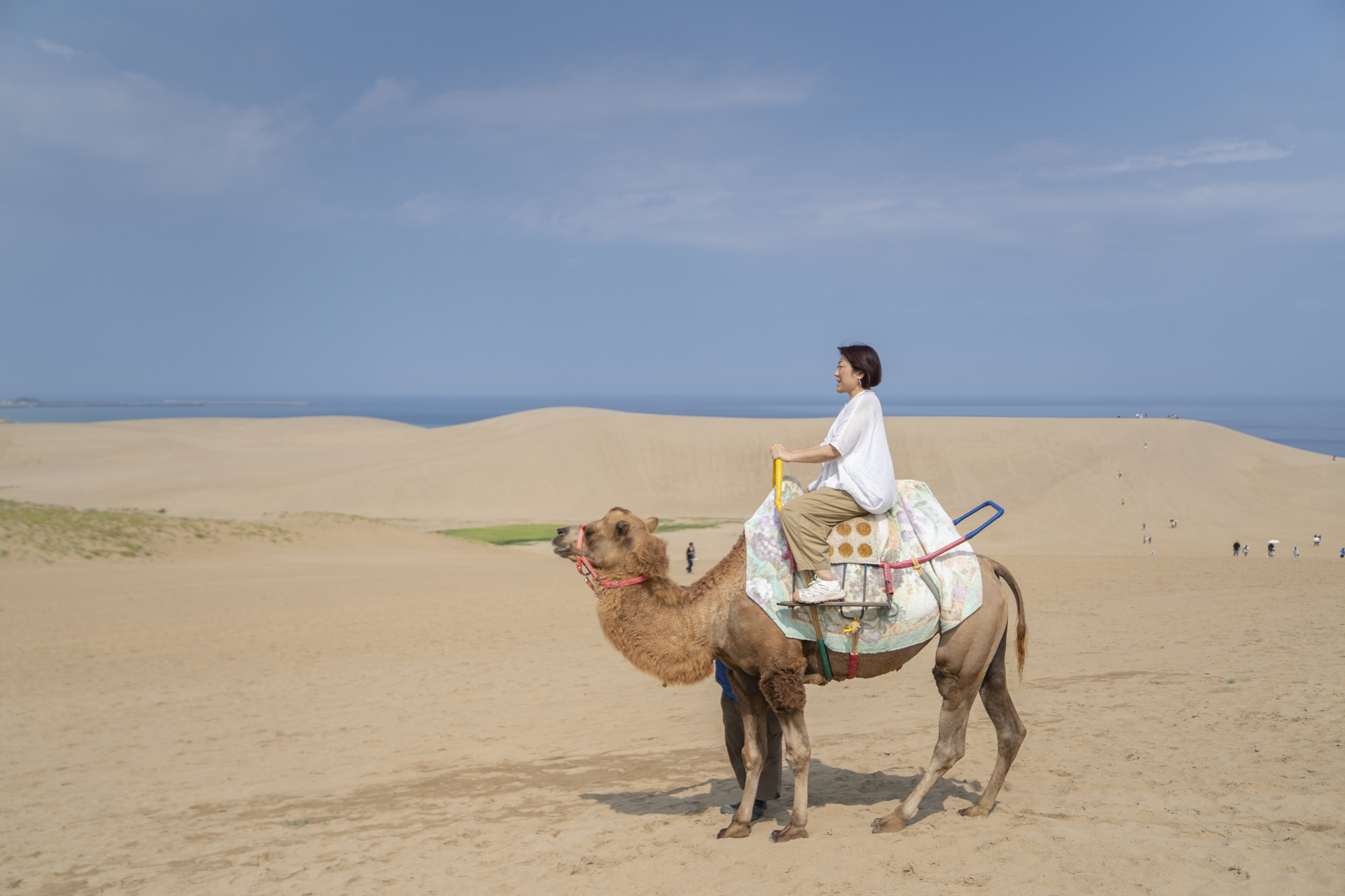 Camel ride experience 1,600 yen per person; commemorative photo 650 yen.
Camel ride experience 1,600 yen per person; commemorative photo 650 yen.
At the entrance, you can stroll with or take a commemorative photo beside the resident camels—or even view the dunes from camelback, a perspective that feels truly otherworldly.
A journey through Hyogo and Tottori, where nature and culture intertwine, continues to weave new encounters and stories—carried forward on the wind, just like the ever-changing sands.
(Featured Spots)
Syofuso
Utopia Hamasaka
https://www.town.shinonsen.hyogo.jp/page/?mode=detail&page_id=2229fa7578f92aca7a8800bf1df7e3b7
Amarube Railway Bridge “Station in the Sky” Observation Deck
https://michinoeki-amarube.com/soranoeki/
Ametsuchi Sightseeing Train
https://www.jr-odekake.net/railroad/kankoutrain/Ametsuchi/
Tottori Sand Dunes
Tottori Sand Dunes Rakudaya





